Intel Core i7-11700K Review: Blasting Off with Rocket Lake
by Dr. Ian Cutress on March 5, 2021 4:30 PM EST- Posted in
- CPUs
- Intel
- 14nm
- Xe-LP
- Rocket Lake
- Cypress Cove
- i7-11700K
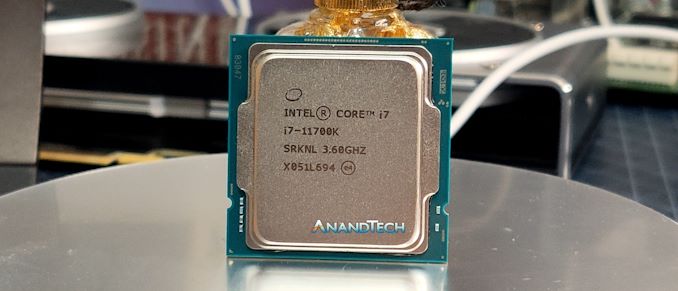
The march on performance with desktop platforms has unique challenges compared to other platforms. Peak single thread throughput is often considered the Holy Grail, with a fast follow up of good multi-core and all-core performance given the nature of how desktop platforms are used with background processes and multiple concurrent applications. In order to bring its best single core performance to the desktop market, Intel had to redesign its 10nm product on 14nm, which combines the high throughput of the design with the high frequency of 14nm. These redesigned Cypress Cove cores form the basis of Intel’s new 11th Gen Desktop Processor Family, Rocket Lake. Today we are reviewing the Core i7-11700K, an eight-core processor with hyperthreading able to boost up to 5.0 GHz.
Notice
The official launch date for these processors, and full reviews, is March 30th. We are currently under NDA with Intel for the information that has been provided by Intel, and will publish that information in due course. However, as noted in a number of press outlets, some units have already been sold at retail before that sales date. Units obtained by that method are not under NDA by definition, and we obtained the Core i7-11700K for this review at retail, and as such we are not under NDA for any information we have obtained through using this processor.
Before publishing this review, we gave Intel advance notice to respond to us having a full review ahead of the formal release. Our email seemingly generated some excitement inside (and to our surprise, outside) Intel, but we received a response from Intel stating that they had no comment to offer.
Update 1: This review was originally posted on March 5th using 0x2C microcode, and has been updated on March 14th with data from 0x34 microcode. The difference between the two is about +1.8% on CPU tests, +3% on Gaming tests, including performance regression in some areas. This review will showcase both sets of results. Details of the update can be found here.
Rocket Lake We Know About
Core i9-11900K and Core i7-11700K
Back at the start of the year, during CES, Intel disclosed product information about its lead halo product on the Rocket Lake platform, the Core i9-11900K. This includes some microarchitecture details, as well as core count, frequency, memory, graphics, and features relating to IO and the chipset. With our review here today, we can add the 11700K to that data with what we can probe from the processor.
| AnandTech | Core i9-11900K |
Core i7-11700K |
| SoC | Rocket Lake | Rocket Lake |
| Microarchitecture | Cypress Cove | Cypress Cove |
| Cores / Threads | 8 / 16 | 8 / 16 |
| TDP | 125 W | 125 W |
| Base Frequency | ? | 3600 MHz |
| Turbo 2.0 (1-2 C) | ? | 4900 MHz |
| Turbo 3.0 (1-2 C) | ? | 5000 MHz |
| Thermal Velocity Boost | 5300 MHz | - |
| All Core Turbo | 4800 MHz | 4600 MHz |
| DDR4 | 2 x DDR4-3200 | 2 x DDR4-3200 |
| GPU + EUs | Xe-LP, 32 EUs | Xe-LP, 32 EUs |
| PCIe | 4.0 x16 + 4.0 x4 | 4.0x16 + 4.0 x4 |
| AVX-512 | Yes | Yes |
| Price | ? | We paid equivalent $469 |
The differences between the two Rocket Lake processors, based on available information, are slim. The main difference is that the Core i9 is known to have Intel’s Thermal Velocity Boost technology, however the Core i7 does not – this means the peak frequency is only 5.0 GHz, not 5.3 GHz. The all core frequency is only 200 MHz different.
The new generation Rocket Lake is the combination of two different backported technologies. Intel took the Sunny Cove core from 10nm Ice Lake, and re-built it on 14nm, calling it now Cypress Cove. Intel also took the Xe graphics from 10nm Tiger Lake and re-built those on 14nm, but these are still called Xe graphics.
We can see that the new design is an amalgam of new technologies, by comparing Rocket Lake to Comet Lake, Ice Lake, and Tiger Lake:
| Microarchitecture Comparison | |||||
| AnandTech | Comet Lake |
Rocket Lake |
Ice Lake |
Tiger Lake |
Ryzen 5000 |
| Form Factor | Desktop | Desktop | Laptop | Laptop | Desktop |
| Max Cores | 10 | 8 | 4 | 4 | 16 |
| TDP | 125 W | 125 W | 28 W | 35 W | 105 W |
| uArch | Comet | Cypress | Sunny | Willow | Zen 3 |
| IGP | Gen 9 | Xe-LP | Gen 11 | Xe | - |
| IGP Cores | 24 | 32 | 64 | 96 | - |
| L1-D | 32 KB /c | 48 KB /c | 48 KB /c | 48 KB/c | 32 KB/c |
| L2 Cache | 256 KB /c | 512 KB /c | 512 KB/c | 1280KB /c | 512 KB/c |
| L3 Cache | 20 MB | 16 MB | 8 MB | 12 MB | 64 MB |
| PCIe | 3.0 x16 | 4.0 x20 | 3.0 x8 | 4.0 x4 | 4.0 x24 |
| DDR4 | 2 x 2933 | 2 x 3200 | 2 x 3200 | 2 x 3200 | 2 x 3200 |
| LPDDR4X | - | - | 4 x 3733 | 4 x 4266 | - |
There are obviously some differences between the notebook and desktop parts, most noticeably that the new platform at the high-end has only eight cores, two fewer than Comet Lake.
This is because Intel found 8 cores to be the best balance of die area, power consumption, performance, and cost. Several times I’ve seen Intel spokespeople say the reason for 8 cores being ‘the most we could fit’, although that’s categorically false. More cores can be added, but overall they would run at a lower frequency for the same power, the interconnect might not scale, or the die size/yield would raise the price too much. The phrase ‘the most we could fit’, by all technical understanding, is a steaming pile. It needs additional qualifiers, or to simply say 'the best fit given die area, yield, and cost'.
Additional improvements over Comet Lake include AVX512 units, support for 20 PCIe 4.0 lanes, and faster memory. With the new chipsets, Intel has already disclosed that the Rocket Lake platform will have native USB 3.2 Gen 2x2 (20 Gbps), and with the Z590 motherboards, a double bandwidth link from CPU to the chipset, moving from DMI x4 to DMI x8, effectively a PCIe 3.0 x8 link.
Rocket Lake on 14nm: The Best of a Bad Situation
The delays around the viability of Intel’s 10nm manufacturing have been well documented. To date, the company has launched several products on its 10nm process for notebooks, such as Cannon Lake, Ice Lake, Jasper Lake, Elkhart Lake, and Tiger Lake. There have been other non-consumer products, such as Agilex FPGAs and Snow Ridge 5G SoCs, and Intel has confirmed that its 10nm server products ‘Ice Lake Xeon Scalable’, are currently in volume production for a late Q1 launch.
The one product line missing from that list is the desktop and enthusiast segments that typically use socketed processors paired with discrete graphics. Intel has always committed to launching desktop processors on its 10nm process, however we are yet to see the results of their efforts. The issues Intel is having with 10nm have never been fully elaborated on, with Intel instead opting to promote some of the improvements made, such as its new SuperFin technology, which is in Tiger Lake and the next-generation server platform beyond Ice Lake Xeon Scalable (for those keeping track, that would be Sapphire Rapids). The 10nm improvements so far has enabled Intel to launch notebook processors and server processors, both of which have lower power-per-core than a typical desktop offering.
As 10nm has not been able to meet the standards required for desktop-level performance, rather than leave a potential 3 year gap in the desktop product family, Intel has been in a holding pattern releasing slightly upgraded versions of Skylake on slightly improved variants of 14nm. The first two members of the Skylake family, Skylake and Kaby Lake were released as expected. While waiting, we saw Intel release Coffee Lake, Coffee Lake Refresh, and Comet Lake. Each of these afforded minor updates in frequency, or core count, or power, but very little in the way of fundamental microarchitectural improvement. The goal all along was to move to 10nm with the same architecture as the mobile Ice Lake processors, but that wasn’t feasible due to manufacturing limitations limiting how well the processors scaled to desktop level power.
- Skylake, Core 6th Gen in August 2015
- Kaby Lake, Core 7th Gen in January 2017
- Coffee Lake, Core 8th Gen in October 2017
- Coffee Lake Refresh, Core 9th Gen in October 2018
- Comet Lake, Core 10th Gen in April 2020
- Rocket Lake, Core 11th Gen in March 2021
With previous generations, Intel traditionally had either upgraded the process node technology, or updated the microarchitecture – a process that Intel called Tick-Tock. Originally Intel was set to perform a normal ‘Tick’ after Kaby Lake, and have Cannon Lake with the same effective Skylake microarchitecture move to 10nm. Cannon Lake ending up only as a laptop processor with no working graphics in a small number of notebooks in China as it was a hot mess (as shown in our review). As a result, Intel refocused its 10nm for notebook processors hoping that advances would also be applicable to desktop, but the company had to release minor upgrades on desktop from Coffee Lake onwards to keep the product line going.
This meant that at some level Intel knew that it would have to combine both a new architecture and a new process node jump into one product cycle. At some point however, Intel realized that the intercept point with having a new microarchitecture and the jump for the desktop to 10nm was very blurry, and somewhat intangible, and at a time when its main competitor was starting to make noise about a new product that could reach parity in single core performance. In order to keep these important product lines going, drastic measures would have to be taken.
After many meetings with many biscuits, we presume, the decision was made that Intel would take the core microarchitecture design from 10nm Ice Lake, which couldn’t reach high enough frequencies under desktop power, and repackage that design for the more dependable 14nm node which could reach the required absolute performance numbers. This is known as a ‘backport’.
Sunny Cove becomes Cypress Cove
The new Core 11th Gen processor which we are looking at today has the codename Rocket Lake. That’s the name for the whole processor, which consists of cores, graphics, interconnect, and other different accelerators and IP blocks, each of which also have their own codenames, just for the sake of making it easier for the engineers to understand what parts are in use. We use these codenames a lot, and the one to focus on here is the CPU core.
Intel’s 10nm Ice Lake notebook processor family uses Sunny Cove cores in the design. It is these cores that have been backported to 14nm for use in the Rocket Lake processors, and because it is on a different process node and there are some minor design changes, Intel calls them Cypress Cove cores.
The reason behind this is because taking a design for one manufacturing process and designing it for a second is no easy task, especially if it’s a regressive step – transistors are bigger, which means logic blocks are bigger, and all the work done with respect to signaling and data paths in the silicon has to be redone. Even with a rework, signal integrity needs to be upgraded for longer distances, or additional path delays and buffers need to be implemented. Any which way you cut it, a 10nm core is bigger when designed for 14nm, consumes more power, and has the potential to be fundamentally slower at execution level.
Intel’s official disclosures to date on the new Cypress Cove cores and Rocket Lake stem from a general briefing back in October, as well as a more product oriented announcement at CES in January. Intel is promoting that the new Cypress Cove core offers ‘up to a +19%’ instruction per clock (IPC) generational improvement over the cores used in Comet Lake, which are higher frequency variants of Skylake from 2015. However, the underlying microarchitecture is promoted as being identical to Ice Lake for mobile processors, such as caches and execution, and overall the new Rocket Lake SoC has a number of other generational improvements new to Intel’s desktop processors.
In This Review, and Limitations
As mentioned at the outset, this is a review prior to the official review embargo for these processors. We are able to post this outside of the NDA as we were able to obtain the hardware at retail. There is still a lot of information that has not been disclosed, the sort of thing that normally accompanies a new processor launch, and whatever Intel has told is still part under NDA – details of which are also under the same NDA. So we won’t be able to go into those just yet, but we can start to fire some benchmark data at you. In this review we’re focusing mainly on the generational 8-core offerings across a number of products and generations.
| 8-Core CPU Comparison | ||||||
| AnandTech | Core i9-9900KS |
Core i7-10700K |
Core i7-11700K |
Ryzen 7 5800X |
Ryzen 7 4750G |
|
| uArch | Coffee Refresh |
Comet Lake |
Cypress Cove |
Zen 3 | Zen 2 + Vega |
|
| Cores | 8 C / 16 T | 8 C / 16 T | 8 C / 16 T | 8 C / 16 T | 8 C / 16 T | |
| Base Freq | 4000 | 3800 | 3600 | 3800 | 3600 | |
| Turbo Freq | 5000 | 5100 | 5000 | 4800 | 4400 | |
| All-Core | 5000 | 4700 | 4600 | ~4550 | ~4150 | |
| TDP | 127 W | 125 W | 125 W | 105 W | 65 W | |
| IGP / EUs | Gen 9, 24 | Gen 9, 24 | Xe-LP, 32 | - | Vega, 8 | |
| L3 Cache | 16 MB | 16 MB | 16 MB | 32 MB | 8 MB | |
| DDR4 | 2 x 2666 | 2 x 2933 | 2 x 3200 | 2 x 3200 | 2 x 3200 | |
| PCIe | 3.0 x16 | 3.0 x16 | 4.0 x20 | 4.0 x24 | 3.0 x8 | |
| MSRP | $513 box | $387 box | ? | $449 SEP | ~$345 | |
We paid 394€ for our processor pre-tax, which comes to $469. We suspect this is well above Intel's recommended retail price, given that this was sold before the official sales date and demand for high performance processors is very high.
Test Setup and #CPUOverload Benchmarks
As per our processor testing policy, we take a premium category motherboard suitable for the socket, and equip the system with a suitable amount of memory running at the manufacturer's maximum supported frequency. This is also run at JEDEC subtimings where possible. Reasons are explained here.
| Test Setup | |||||
| Intel Rocket Lake |
Core i7-11700K | MB1: Microcode 0x2C MB2: Microcode 0x34 |
TRUE Copper + SST* |
ADATA 4x32 GB DDR4-3200 |
|
| Intel Comet Lake |
Core i7-10700K | - | - | TRUE Copper + SST* |
ADATA 4x32 GB DDR4-2933 |
| Intel Coffee Refresh |
Core i9-9900KS | MSI MPG Z390 Gaming Edge AC |
AB0 | TRUE Copper +SST* |
ADATA 4x32GB DDR4-2666 |
| AMD AM4 |
Ryzen 7 5800X Ryzen 7 4750G |
GIGABYTE X570I Aorus Pro |
F31L | Noctua NHU-12S SE-AM4 |
ADATA 2x32 GB DDR4-3200 |
| GPU | Sapphire RX 460 2GB (CPU Tests) NVIDIA RTX 2080 Ti FE (Gaming Tests) |
||||
| PSU | Corsair AX860i | ||||
| SSD | Crucial MX500 2TB | ||||
| *TRUE Copper used with Silverstone SST-FHP141-VF 173 CFM fans. Nice and loud. **Other CPUs in graphs tested in same systems for CPU family |
|||||
While we can't disclose the motherboard used due to NDA reasons, it has already been announced by the manufacturer. Meanwhile, the BIOS used is likely not the final variant that will be used for Rocket Lake's retail launch later this month, and further BIOSes may contain potential minor adjustments to performance or turbo responses.
As an addendum to this review a week after our original numbers, we obtained a second motherboard that offered a newer microcode version from Intel. The original motherboard still offered the same microcode at that time. For more details, please see this link.
We must thank the following companies for kindly providing hardware for our multiple test beds. Some of this hardware is not in this test bed specifically, but is used in other testing.
| Hardware Providers for CPU and Motherboard Reviews | |||
| Sapphire RX 460 Nitro |
NVIDIA RTX 2080 Ti |
Crucial SSDs | Corsair PSUs |
 |
 |
 |
|
| G.Skill DDR4 | ADATA DDR4 | Silverstone Coolers |
Noctua Coolers |
 |
 |
 |
|
A big thanks to ADATA for the AD4U3200716G22-SGN modules for this review. They're currently the backbone of our AMD testing.
Users interested in the details of our current CPU benchmark suite can refer to our #CPUOverload article which covers the topics of benchmark automation as well as what our suite runs and why. We also benchmark much more data than is shown in a typical review, all of which you can see in our benchmark database. We call it ‘Bench’, and there’s also a link on the top of the website in case you need it for processor comparison in the future.
Table Of Contents
- Intel Core i7-11700K Review: Blasting Off with Rocket Lake
- Power Consumption: Hot Hot HOT
- CPU Tests: Microbenchmarks
- CPU Tests: Office and Science
- CPU Tests: Office and Science
- CPU Tests: Encoding
- CPU Tests: SPEC
- Gaming Tests
- Conclusion: The War of Attrition
Note: If you've reached this far, great! This is not the end of the review. We have over a dozen pages with data and benchmark results, as well as a conclusion. They are all in the drop down box below.


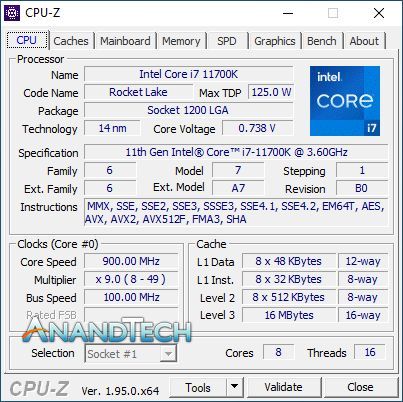
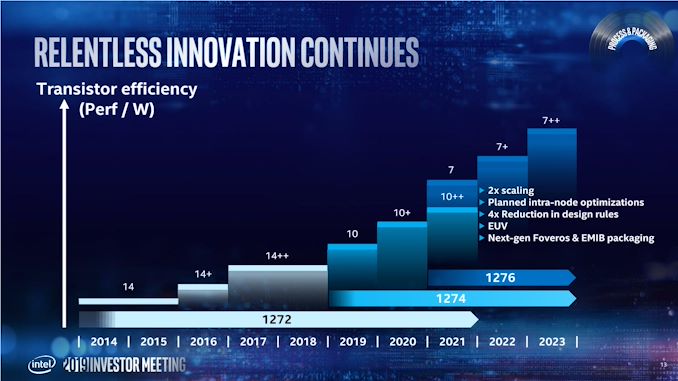


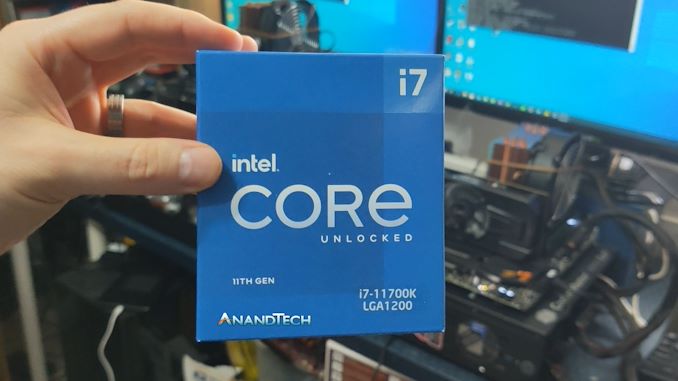
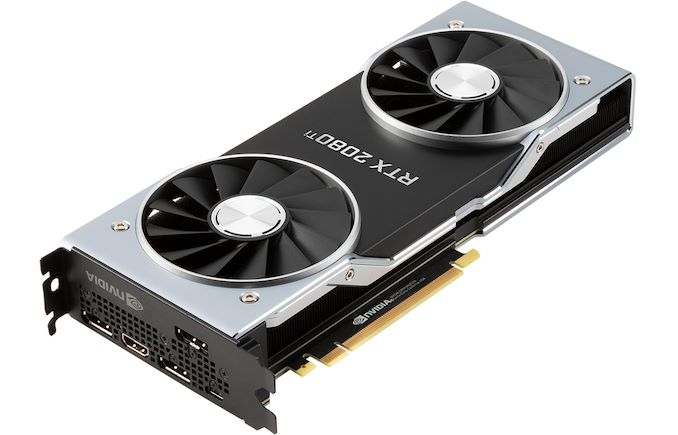
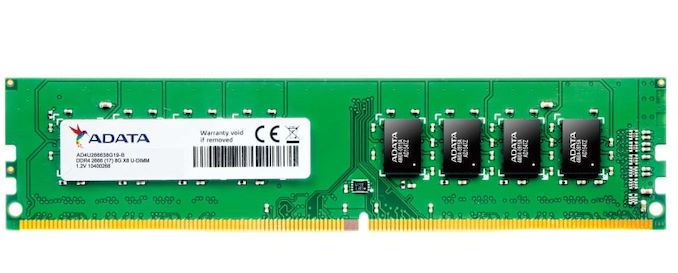








541 Comments
View All Comments
blppt - Saturday, March 13, 2021 - link
They did try to at least 'ride it out' until Zen could get done, and that required smoothing out the rough edges, so they did devote some resources.BD/PD never did any better than a low-end solution for the desktop/laptop market, but they had to offer something until Zen was done.
Oxford Guy - Sunday, March 28, 2021 - link
'They did try to at least 'ride it out' until Zen could get done, and that required smoothing out the rough edges, so they did devote some resources.'Wow... watch the goal posts move.
Riding out = doing nothing. Piledriver was not improved. The entire higher-performance & supercomputer market was unchanged from Piledriver to Zen. All AMD did was ship cheap knock-off APU rubbish and console trash.
The fact that AMD succeeded with Zen is probably mostly a testament to one largely ignored feature of monopoly power: the monopolist can become so slow and inefficient that a nearly dead competitor can come back to best it. That's not symptomatic of a well-run economic system. It's a trainwreck.
AMD should have been wealthy enough to do proper R&D and bulldozer would have never happened in the first place. But, Intel was a huge abusive monopolist and everyone went right along, content to feed the problem. After AMD did Bulldozer and Piledriver the company should have been dead. If there had been adequate competition it would have been. So, ironically, AMD can thank Intel for being its only competition, for resting on its laurels because of its extreme monopolization.
GeoffreyA - Wednesday, March 10, 2021 - link
Oxford Guy. I don't remember the exact details and am running largely from memory here. Yes, I agree, Bulldozer had far lower IPC than Phenom, but, according to their belief, was supposed to restore them to the top and knock Intel down. In practice, it failed miserably and was worse even than Netburst. Credit must be given, however, for their raising Bulldozer's IPC a lot each generation (something like 20-30% if I remember right), and curtailing power. It also addressed weaknesses in K10 and surpassed K10's IPC eventually. Anyway, working against such a hopeless design surely taught them a lot; and pouring that knowledge into a classic x86 design, Zen, took it further than Skylake after just one iteration.AMD would have done better had they just persisted with K10, which wasn't that far behind Nehalem. But, perhaps we wouldn't have had Zen: it took AMD's going through the lowest depths, passing through the fire as it were, to become what they are today, leaving Intel baffled. I agree, they were truly idiotic in the last decade but no more. May it stay that way!
Concerning CMT, I don't know much about it to comment, but think Bulldozer's principal weakness came from sharing execution units---the FP units I believe and others---between modules. Zen kept each core separate and gave it full (and weighty) resources, along with a micro-op cache and other improvements. As for Jaguar, it may be junk from a desktop point of view, yes, but was excellent in its domain and left Atom in the dust.
Oxford Guy - Sunday, March 28, 2021 - link
'Credit must be given, however, for their raising Bulldozer's IPC a lot each generation (something like 20-30% if I remember right), and curtailing power.'Piledriver was a small IPC improvement and regressed in AVX. Piledriver's AVX was so extremely poor that it was faster to not use it. Piledriver was a massive power hog. The 32nm SOI process node, according to 'TheStilt' was improved over time which is probably the main source of power efficiency improvement in Piledriver versus Bulldozer. I do not recall the IPC improvement of Piledriver over Bulldozer but it was nothing close to 20% I think. Instead, it merely made it possible to raise clocks further, along with the aforementioned node improvement. And, 'TheStilt' said the node got better after Piledriver's first generation. The 'E' parts, for instance, were quite a lot improved in leakage — but the whole line (other than the 9000 series which he said should have been sent to the scrapper) improved in leakage. What didn't improve, sadly, is the bad Piledriver design. AMD never bothered to fix it.
While Piledriver, when clocked high (like 4.7 GHz) could be relevant against Sandy in multi-thread (including well-threaded games like Desert of Kharak) it was extremely pitiful in single-thread. And, it sucked down boatloads of power to get to 4.7, even with the best-leakage chips.
And, going back to your 20–30% claim. Steamroller, which was considered a serious disappointment, featured only 4 of the CMT quasi cores, not 8. Excavator cut things in cache land even further. Both were cost-cutting parts, not performance improvements. Piledriver killed both of them simply by turning up the clocks high. The multi-thread performance of Steamroller and Excavator was not competitive because of the lack of cache, lack of cores, and lack of clock. Single-thread was a bit improved but, again, the only thing one could really do was blast current through Piledriver. It was a disgusting situation due to the single-threaded performance, which was unacceptable in 2012 and an abomination for the later years AMD kept peddling Piledriver in.
The only credit AMD deserves for the construction core period is not going out of business, despite trying so hard to do that.
GeoffreyA - Sunday, March 28, 2021 - link
Oxford Guy, while I respect your view, I do not agree with it, and still stand by my statement that AMD deserves credit for improving Bulldozer and executing yearly. Agreed, my 20-30% claim was not sober but I just meant it as a recollection and did qualify my statement.I don't think it's fair to put AMD down for embarking on Bulldozer. When they set out, quite likely they thought it was going to go further than the aging Phenom/K10 design, and the fact is, while falling behind in IPC compared with K10, it improved on a lot of points and laid the foundation. Its chief weakness was the idea of sharing resources, like the fetch, decode, and FP units, as well as going for a deeper pipeline. (The difference from Netburst is that Bulldozer was decently wide.)
Piledriver refined the foundation, raising IPC and adding a perceptron branch predictor, still used in Zen by the way, and I believe finally surpassed K10's IPC (and that of Llano). While being made on the same 32 nm process, it dropped power by switching to hard-edge flip flops, which took some work to put in. They used that lowered power to raise clock speeds, bringing power to the same level as Bulldozer. And Trinity, the Piledriver APU, surpassed Llano. I need to learn more about Steamroller and Excavator before I comment, but note in passing that SR improved the architecture again, giving each integer core its own fetch/decode units, among other things; and Excavator switched to GPU libraries in laying out the circuitry, dropping power and area, the tradeoff being lower frequency.
GeoffreyA - Sunday, March 28, 2021 - link
Also, the reviews show that things were not as bad as we remember, though power was terrible.https://www.anandtech.com/show/6396/the-vishera-re...
https://www.anandtech.com/show/5831/amd-trinity-re...
Oxford Guy - Tuesday, April 6, 2021 - link
I don't need to look at reviews agaih. I know how bad the IPC was in Bulldozer, Piledriver, Steamroller, and Excavator. Single-thread in Cinebench R15, for instance, was really low even at 5.2 GHz in Piledriver. It takes chilled water to get it to bench at that clock.GeoffreyA - Wednesday, March 10, 2021 - link
Lack of competition, high prices, lack of integrity. I agree it's one big mess, but there's so little we can do, except boycotting their products. As it stands, the best advice is likely: find a product at a decent price, buy it, be happy, and let these rotten companies do what they want.Oxford Guy - Sunday, March 28, 2021 - link
'find a product at a decent price, buy it, be happy'Buy a product you can't buy so you can prop up monopolies that cause the problem of shortage + bad pricing + low choice (features to choose from/i.e. innovation, limited).
GeoffreyA - Sunday, March 28, 2021 - link
The only solution is a worldwide boycott of their products, till they drop their prices, etc.